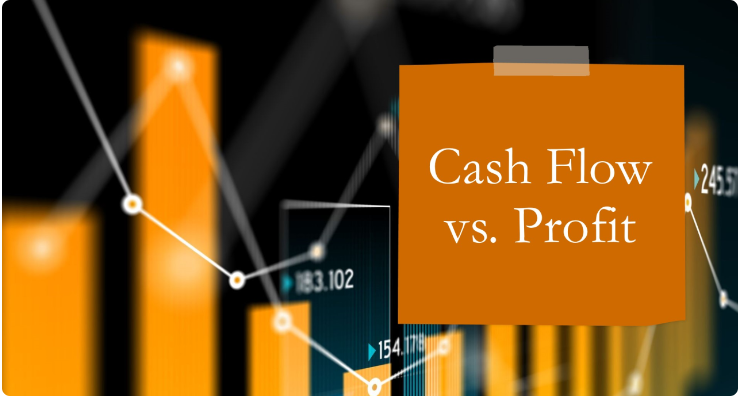Cash Flow vs. Profit: What Every Entrepreneur Should Understand
If you’ve ever looked at your business finances and thought, “I made a profit so why do I still feel broke?” you’re not alone. Many entrepreneurs confuse profit with cash flow, but they’re not the same thing. In fact, misunderstanding the difference is one of the top reasons businesses struggle or fail.
To build a financially healthy business, you need to understand how profit and cash flow work together, and why managing both is essential.
What Is Profit?
Profit is what’s left after you subtract expenses from revenue. It comes in three main forms:
-
Gross Profit: Revenue minus the cost of goods sold (COGS).
-
Operating Profit: Gross profit minus operating expenses like salaries, rent, and utilities.
-
Net Profit: The “bottom line”what’s left after all expenses, including taxes and interest, are paid.
Profit shows whether your business is theoretically making money.
What Is Cash Flow?
Cash flow refers to the actual movement of money in and out of your business. It answers the question: Do you have enough cash on hand to pay bills, employees, and suppliers right now?
Types of cash flow:
-
Operating Cash Flow: Money from sales and daily operations.
-
Investing Cash Flow: Money spent on or earned from investments (like buying equipment or selling assets).
-
Financing Cash Flow: Money from loans, investors, or debt repayment.
Cash flow shows whether your business has the liquidity to function day-to-day.
Profit vs. Cash Flow: The Key Difference
-
Profit = Paper number (based on accounting calculations).
-
Cash flow = Real-time money in the bank.
A business can be profitable on paper but still run out of cash if clients delay payments, expenses come due too quickly, or money is tied up in inventory. Conversely, a business can have healthy cash flow for a while but operate at a loss if expenses outweigh revenue over time.
Why Entrepreneurs Must Master Both: Cash Flow vs. Profit: What Every Entrepreneur Should Understand
-
Survival Depends on Cash Flow
You can’t pay salaries or rent with “paper profits.” Without positive cash flow, even profitable businesses collapse. -
Growth Depends on Profit
Long-term expansion requires profit. Reinvesting profits fuels marketing, product development, and hiring. -
Investor & Lender Confidence
Lenders care about cash flow (to ensure you can repay loans), while investors look at profitability (to see long-term returns).
How to Manage Profit and Cash Flow Together
-
Track Both Separately: Use accounting software to monitor profit and cash flow in real time.
-
Create a Cash Flow Forecast: Project incoming payments and outgoing expenses to avoid shortages.
-
Encourage Faster Payments: Offer discounts for early payments or require deposits upfront.
-
Control Spending: Delay non-essential purchases until you’re sure cash flow allows.
-
Reinvest Wisely: Use profits strategically to strengthen your cash position and fuel growth.
Final Thoughts on Cash Flow vs. Profit: What Every Entrepreneur Should Understand
Profit tells you if your business is worthwhile. Cash flow tells you if your business can survive today. Both are critical one for sustainability, the other for immediate stability.
The most successful entrepreneurs don’t just chase profits; they master cash flow management, ensuring their businesses are both profitable on paper and strong in practice.


